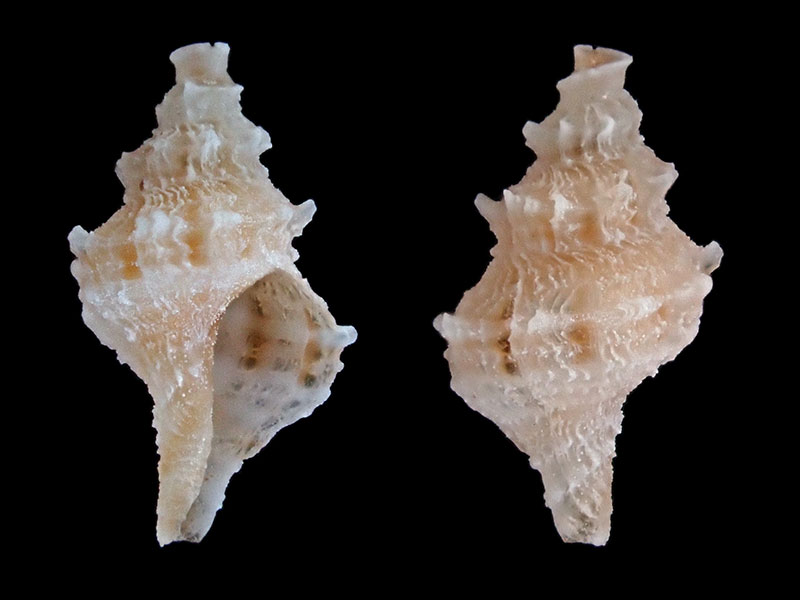Compare Lamellitrophon tangaroa
| toggle to add to compare list |
Taxonomy
Family: Subfamily: MURICIDAE: PAGODULINAE Full Classification: Mollusca (Phylum) > Gastropoda (Class) > Caenogastropoda (Subclass) > Neogastropoda (Order) > Muricoidea (Superfamily) > Muricidae (Family) > Pagodulinae (Subfamily) > Lamellitrophon (Genus) > tangaroa (Species) |
Images: Lamellitrophon tangaroa B.A. Marshall & Houart, 2022
Taxonomy
Family: Subfamily: MURICIDAE: PAGODULINAE Full Classification: Mollusca (Phylum) > Gastropoda (Class) > Caenogastropoda (Subclass) > Neogastropoda (Order) > Muricoidea (Superfamily) > Muricidae (Family) > Pagodulinae (Subfamily) > Lamellitrophon (Genus) > tangaroa (Species) |
Details: Lamellitrophon tangaroa B.A. Marshall & Houart, 2022
Size/Grows to:
Height 6.4mm
Distribution:
Middlesex Bank, Three Kings Islands, and north-eastern North Island, from Spirits Bay to as far south as Ranfurly Bank, 16-143 metres, living at 50-56 metres
Geographical Range:
A
Notes:
Species Links
Distribution Map
References and Publications
- Marshall, B.A., Houart, R. 2022 New species and genera of Muricidae (Mollusca: Gastropoda) from New Zealand, Novapex, 23(1) (p.10) Original Description
*98 © Museum of New Zealand Te Papa Tongarewa (CC-BY-NC-ND)
Key to Geographical Ranges

The symbols K.A.C.F.M.An. are used to indicate the geographical range of the species.
They have been adopted to give an approximation of the range of each species within New Zealand.
K=
Kermadec Islands
A=
Aupourian - Kaipara Harbour, north around North Cape, encompassing the Three Kings Islands and south to East Cape
C=
Cookian - Lower North Island and the northern part of the South Island
F=
Forsterian - Otago, Fiordland and Stewart Island
M=
Moriorian - Chatham Islands, Pitt Island
An=
Antipodean - Subantarctic Islands of New Zealand
Fw =
Freshwater
L =
Land
N =
North Island
S =
South Island
R =
Recent
Sf =
Subfossil
Fo =
Fossil
Recently Viewed


